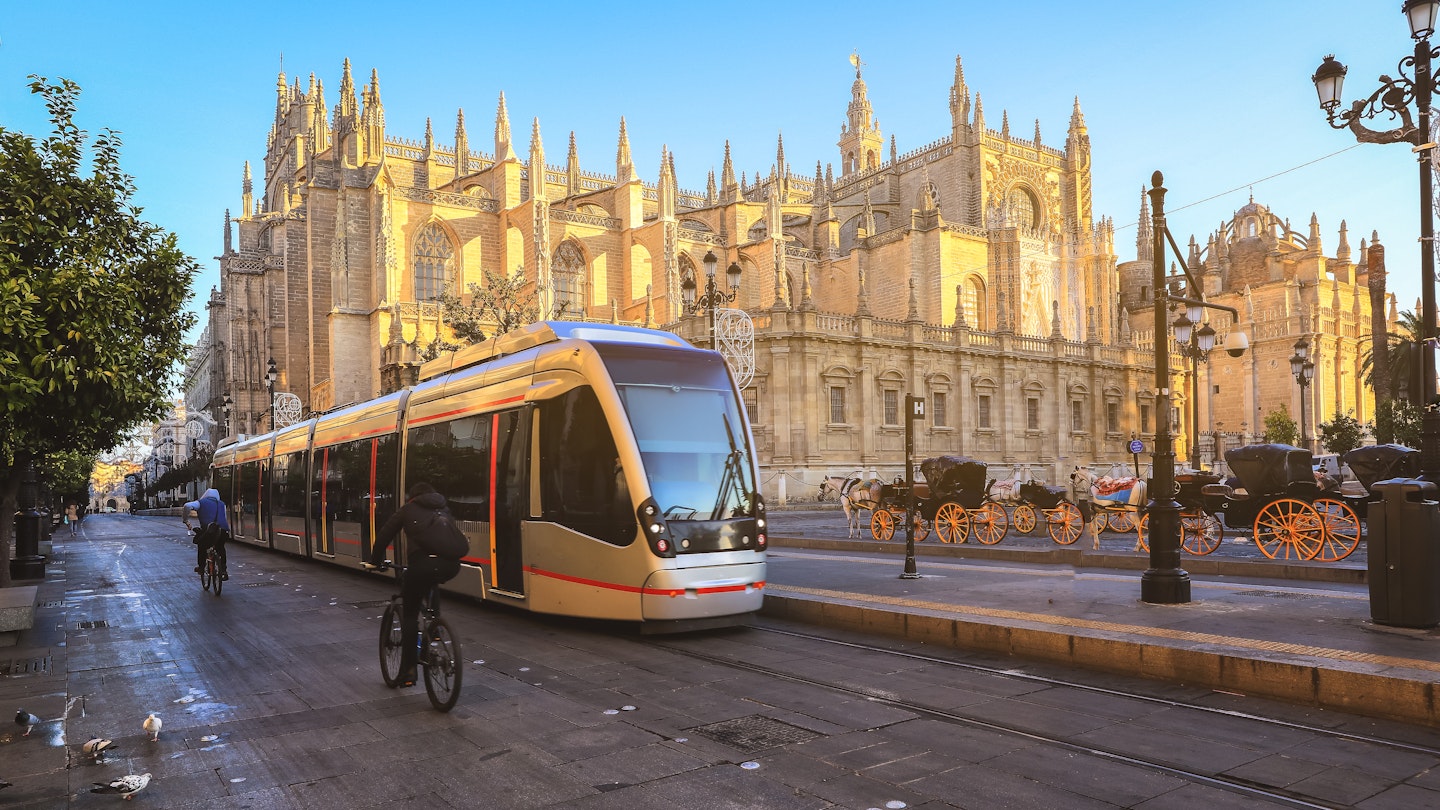Getting Around Seville: A Comprehensive Guide
Seville is a city designed for exploration, particularly on foot. The charming, cobbled streets, riverside promenades, and extensive park areas make it easy to navigate without losing your way. In the event that you wander farther than intended, various efficient and accessible public transport options are readily available to ensure a smooth journey back to your hotel.
With options like e-scooters, a Metro line, trams, and bicycle hire schemes, here are some top tips to help you get around Seville with ease.
Central Seville is Best Explored on Foot
Comfortable shoes are a must as you explore Seville’s historic core, which features a labyrinth of winding streets. Most neighborhoods you’ll want to visit, including Barrio Santa Cruz, Centro, Triana, El Arenal, La Macarena, and Alameda de Hércules, are ideal for walking. In Barrio Santa Cruz, some cobbled alleys are so narrow that only one person can pass through at a time.
The majority of streets in Spain’s fourth-largest city are narrow and often prohibited to most vehicles, which means public transport options such as trams and limited bus routes are your best bet for traversing the core area.

Hire a Bike to Go Beyond the City Center
Walking is not your only option in central Seville, thanks to convenient schemes like the Sevici public bike share. Bikes can be rented at numerous docking stations throughout the city, with costs starting at €2.59 for a single day or €13.33 for a week. This includes all journeys under 30 minutes, with additional charges for longer trips. Key routes feature dedicated bicycle lanes painted in green, such as those along the River Guadalquivir leading to Isla Mágica.
If cycling isn’t your preference, there are also electric bike, e-scooter, and electric moped sharing programs available. Keep in mind that pedestrian zones are off-limits to any two-wheeled transportation.
Know Your Metro from Your MetroCentro
Public transport effectively connects the outer areas of Seville with its core, but the central neighborhoods lack extensive internal connections. The efficient, seven-stop tram line, known as MetroCentro, operates from Plaza Nueva along Avenida de la Constitución, ending near the cathedral. Operating hours are from 6:00 AM until 11:30 PM.
In contrast, the modern Seville Metro light rail began operations in 2010 with its single L1 line, which skirts the southern area of Seville Centro, featuring several stations conveniently located near major sights. A second line is expected to open in 2030, enhancing travel options in this vibrant city.
Ditch the Car and Take a Taxi into Central Seville
While central neighborhoods are accessible to vehicles, navigating the narrow streets filled with pedestrians can be challenging. Consequently, parking is scarce and expensive. Using a taxi may be your best option upon arrival at a bus or train station, especially if your accommodation is in a pedestrian-friendly area.
Seville’s taxis, identifiable by their white color and diagonal yellow stripes, provide an efficient travel option. Local drivers excel in maneuvering tight corners, making it easy to traverse the busy streets of the city center.

Buses Are Great for Exploring Further Afield
The bus network in Seville effectively connects various suburbs to the main city area. For example, Bus 32 serves the Sevilla-Santa Justa train station and stops at notable locations such as Plaza Ponce de León. Flexible routes, including the main north-south lines, enable easy access across the city.
Additionally, another company operates buses to historic sites like the Roman ruins at Itálica, providing another layer of connectivity for those looking to explore beyond the city center.
Seville’s Main Transport Hubs Are Linked by the EA Airport Bus
Visitors to Seville can conveniently navigate between key transport hubs—Santa Justa train station, Seville Airport, and Plaza de Armas bus station—using the EA airport bus. This bus operates regularly throughout the day, offering an affordable and straightforward travel solution for visitors arriving or departing from the city.
Save Money with Transport Passes
Public transportation in Seville is affordable, with single Metro tickets ranging from €1.35 to €1.80. Unlimited-use tourist passes, valid for one or three days, are available for €5 or €10, respectively. These passes are ideal for those planning to take multiple rides in a day.
There Is Accessible Transportation in Seville
Most streets in central Seville, aside from cobbled areas near the Catedral, are flat and accessible for individuals with mobility restrictions. Major attractions, like the Real Alcázar, offer designated routes and facilities for those requiring assistance. All public transport options, including Metro, MetroCentro, and buses, feature wheelchair accessibility and provide priority seating.




